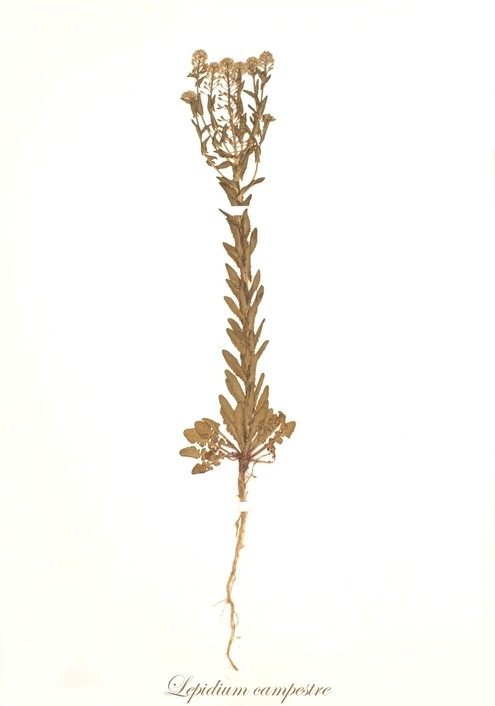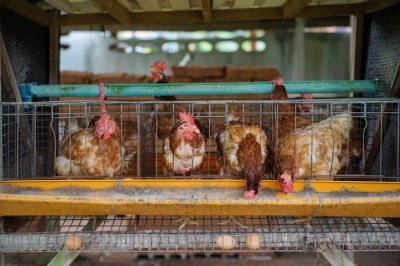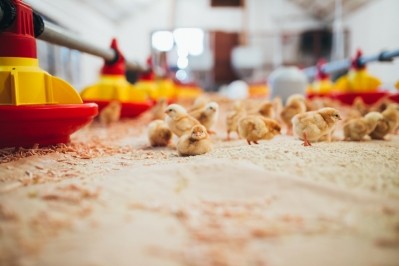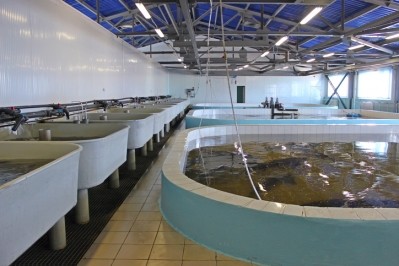Sows could benefit from novel oilseed cake tested in grower pigs

However, their results, published in Livestock Science, would indicate that the presence of high total dietary fiber and glucosinolate in the cake reduced its coefficient of total tract apparent digestibility (CTTAD) and energy value.
As a result, sows or ruminants would likely digest LC to a greater extent than grower pigs, they concluded.
Lead author, Dr Emma Ivarsson, Department of Animal Nutrition and Management, Swedish University of Agricultural Sciences, told FeedNavigator that the team was satisfied that they did not get any negative effect on the feed intake due to the high glucosinolate level.
However, the team was not surprised by the negative effect on digestibility due to the high content of insoluble fiber of the cake, she said.
“The high dietary fiber content is why we thought lepidium cake would fit sows better, especially dry sows with a lower energy requirement and higher capacity to ferment fiber.”
Lepidium campestre
The research was conducted in the context of privileging local produced feedstuffs or co-products that are not used for human consumption in animal diets in an attempt to improve the sustainability of farmed animal production. The idea being that European reliance on imported protein feed for animal feed is not sustainable long term (Tallentire et al., 2018).
“There is a need to explore novel feed resources to be able to minimize the environmental impact of animal production.”
In Northern Europe, the main oilseed crop is winter rapeseed and rapeseed cake is a valuable protein-rich ingredient in pig feed, noted the authors. Rapeseed has, however, a weak winter hardiness and cannot be grown further north than the south of Sweden, they wrote.
Thus, a new, winter-hardy oilseed crop would make it possible to increase the production of plant oil in cold climate regions, said the team.
Field cress, Lepidium campestre (L. campestre), is a wild Brassica species. It is reportedly very winter hardy and has a high yield potential with an upright stature and synchronous flowering, so a good domestication candidate, said the academics.
The plant is biennial and can be grown in the space between two main crops to reduce nutrient leakage from the fields, they added.
Currently, there is an interest in developing L. campestre for future food and biodiesel production, said the team. The cake has also been touted as a potential protein source for animals (Andersson et al., 1999) previously, but not researched in that regard until now.
“To our knowledge, the potential of lepidium cake (LC) as livestock feed has not been studied before.”
The study
The researchers evaluated a total of eight pigs with an initial body weight of 26.5 kg over a 44-day feeding experiment to determine the effect of different inclusion rates of lepidium cake (LC) on palatability, coefficient of total tract apparent digestibility (CTTAD), blood profile, and feeding behavior.
They formulated four diets: a cereal-based control diet and three diets containing 4, 8, and 12% of LC (LC4, LC8, and LC12).
During the adaptation period of one week, before the start of the actual study, the pigs were fed with cereal based control diet. The trial was performed with a changeover design in a double 4 × 4 Latin square, using eight grower pigs, four treatments, and four periods.
The LC results from mechanical extraction of the oil from the lepidium seed. The control diet was composed of barley, wheat, soya bean protein, amino acids, premix, and indigestible marker of titanium dioxide.
The team collected fecal samples for CTTAD determinations on days 8, 9, 10, and 11 of each period. They also collected and analyzed blood samples on day eight of each period. Feeding behavior was evaluated at day one and day eight of each period.
Findings
In summary, the team found that including L. campestre cake in the feed did not undermine the palatability of the test diets for the grower pigs. Blood profile and feeding choice was not affected by the inclusion of the cake in the feed either but the total tract digestibility of feed and the growth rate of pigs were reduced when the feed included LC.
Eating time was not affected by different inclusion rates of LC, but longer eating time was recorded in pigs fed the control diet than those fed different inclusion rates of LC, said the authors.
Eating rate was also affected by treatment, they noted. Accordingly, greater eating rate was documented in pigs fed the diet containing 12% LC than those fed the control diet, they observed. Furthermore, pigs eating the control feed showed a greater frequency of feeding behaviors - searching, throwing, rooting, and moving feed - than those consuming the diet containing 4% of LC, said the team.
“The reason why pigs showed shorter eating time and higher eating rate in the LC diets could be that the pigs liked the taste of the LC diets more than the taste of the cereal based control diet. According to the feed choice test, feed choice was not affected by the feed type; pigs choose to start with the 12% LC feed as often as the control feed.”
Source: Livestock Science
DOI: https://doi.org/10.1016/j.livsci.2019.04.022
Title: Lepidium cake as a feedstuff for pigs
Authors: H. Arefaine, L. Rydhmer, R Andersson, E. Ivarsson












